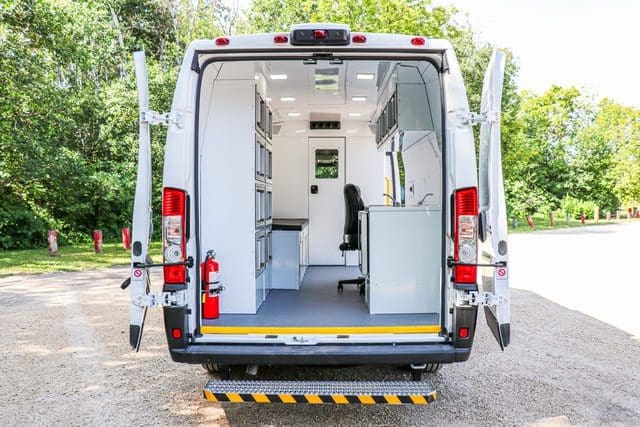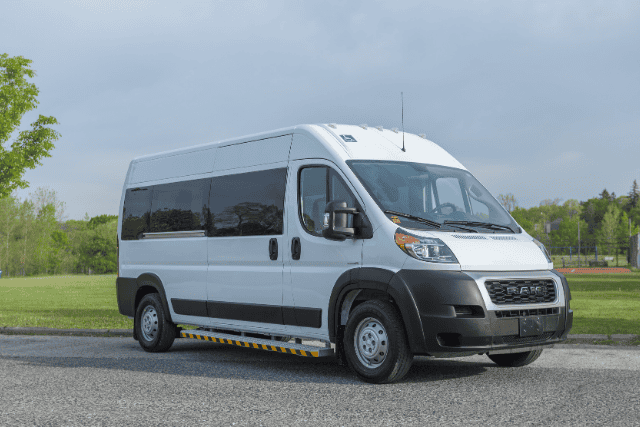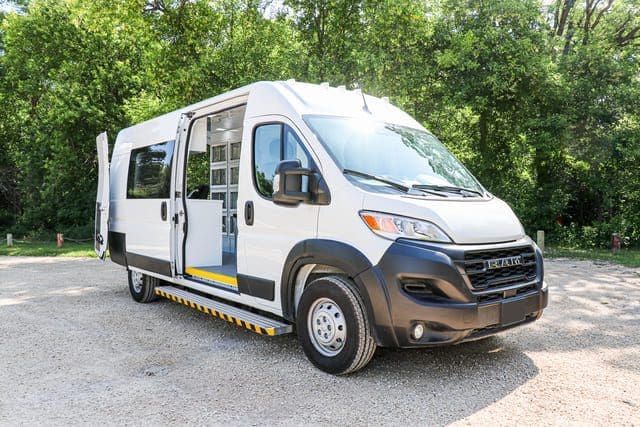Is your organization struggling to find funding to establish its mobile clinic in rural areas? Securing funding for the initial setup and ongoing operational costs of your mobile clinic is one of the biggest hurdles you have to go through. Mobile clinic vans can range up to $225,000, and at this price, you’ll need all the help you can get.
Our team at AVAN Mobility manufactures mobile clinic vans for organizations that provide addiction services, non-emergency response services, social services, and other health programs. We know how difficult it can be to afford one of these vehicles, and that’s why we’re here to help you understand the MOBILE Health Care Act.
After reading this article, you’ll have a clearer idea of what the MOBILE Health Care Act is. You’ll understand if it applies to your organization, and we’ll leave you with some helpful resources to help get your program started off in the right direction.
Expanding access to healthcare: the Mobile Health Care Act
In March 2023, Congress passed a significant piece of legislation known as the MOBILE Health Care Act (S. 958). This bipartisan law was enacted in the fall of 2022 and aims to make a big difference in healthcare access, especially for people living in rural areas and underserved communities. Let’s dive into what this act is all about.
Making healthcare more accessible
The MOBILE Health Care Act is all about making it easier for community health centers to bring healthcare services to places where they’re needed most. These centers are vital for providing medical care to communities that have trouble getting to a regular doctor’s office.
One of the key things this law does is to let these health centers use federal funds through the New Access Points Grants program to set up new mobile healthcare delivery sites. This is a big deal because it means they can create mobile clinics that can reach people in isolated areas.
Why mobile clinics matter

Mobile health units are like small hospitals on wheels. They can go where they’re needed, and that’s especially important in places where it’s hard to find a doctor. These units can do lots of things to keep people healthy, like:
Mammograms: These are important for checking for breast cancer.
Vaccinations: These shots help protect us from diseases.
Overdose prevention: Organizations with a mobile mitigation van can prevent overdoses and offer supervised consumption services
Non-emergency services: These are for non-urgent medical needs.
Mobile health units have become more important than ever, especially with the rise of the COVID-19 pandemic. The National Association of Community Health Centers (NACHC) says there has been a 40% increase in mobile units since 2019. This means more people can get the care they need, even if they can’t easily visit a regular doctor’s office.
Many people rely on community health centers for their healthcare. These centers are often in underserved areas. But sometimes, even if a health center is nearby, people still can’t get the care they need. It might be because they live far away from it, can’t travel easily, don’t have much money, or have mobility challenges.
When does the MOBILE Health Care Act take effect?
This important law goes into action on January 1, 2024. That’s when health centers can start using the new rules and resources to bring mobile clinics to their communities.
Before the MOBILE Health Care Act, health centers had to do something a little more complicated. If they wanted to set up a mobile clinic, they also had to promise to build a regular brick-and-mortar clinic at the same time to go along with each mobile clinic. This made it hard for many centers to help underserved areas.
What the MOBILE Health Care Act Changes
During the 117th Congress, two politicians, Sen. Jacky Rosen (D-NV) and Rep. Susie Lee (D-NV), talked with the NACHC about making things better. They wanted to find a way to expand healthcare access through mobile health units.
With the MOBILE Health Care Act, health centers that are part of something called Section 330 can propose projects for new mobile health units, permanent sites, or even a mix of both. This is a big deal because it gives health centers more options. They can now get funding to set up a mobile clinic without having to promise to build a regular health clinic at the same time.
The MOBILE Health Care Act is an important piece of legislation that changes the rules to help more people get the healthcare they need. It’s all about making healthcare more accessible for more people, especially in areas where it’s hard to find it.
What type of funding is available?
The MOBILE Health Care Act provides a way for Health Centers to get financial help. This law offers funding through the New Access Points (NAP) grant program, which is managed by the Health Resources and Services Administration (HRSA).
How much money is available?
One of the most important things about NAP grants is the amount of money they offer. Health centers can get up to $650,000 per applicant through these grants. This money is really important because it helps cover the costs of getting, setting up, and running mobile healthcare units. It makes sure that health centers have enough money to make these clinics work well for their patients.
Before the MOBILE Act, health centers had a big financial problem because they had to build a regular healthcare facility alongside each mobile unit they wanted to create. This was often very expensive and stopped many organizations from growing their services.
Thanks to the MOBILE Health Care Act, this financial hurdle is gone. Health centers can use NAP grants to make mobile healthcare units without having to build regular facilities too. This gives health centers more freedom to focus on their main job—giving important healthcare services to communities that need them.
Example of the MOBILE Health Care Act
If you’re finding the MOBILE Health Care Act a little confusing to understand, take a look at the following hypothetical example.
Think about a small town in the countryside, far from big cities. Imagine there’s no hospital nearby, and it’s tough for people in that town to get the medical help they need. This was the situation until something important happened: the MOBILE Health Care Act.
Before this act, the community health center in the area wanted to get funding to provide healthcare to people living in remote places around the town. But there was a big problem. They had to build regular hospitals along with mobile healthcare vans to access the funding, which is very expensive.
Then, once 2024 rolls around, the MOBILE Health Care Act becomes law. This will change everything for small towns and other places like it. The act allows health centers to get money from the government through the New Access Points (NAP) grant program.
With a grant of up to $650,000, the small town’s health center will create a fantastic mobile healthcare unit without worrying about having to open a brick-and-mortar location. This unit will be a traveling clinic, and it’ll have everything people need, including mammograms, vaccinations, and medical care for non-urgent problems.
This short example shows how the MOBILE Health Care Act can make a big difference in small towns. It proves that healthcare is for everyone, no matter where they live.
What’s next?

You likely found this article while searching around for funding opportunities and came across the MOBILE Health Care Act.
After reading this article, you learned that the act can benefit your organization once funding begins on January 1, 2024.
At AVAN Mobility, we want to make sure organizations like yours have all of the tools and resources you need to make the most informed decision possible for your next mobile healthcare vehicle. After over a decade of being in this industry, we like to pass on our knowledge to you as a customer.
Now that you know more about the MOBILE Health Care Act funding opportunity, you’ll also be interested in some tips for fundraising for your mobile clinic program. Read our article on the top 10 tips for fundraising for a mobile clinic van.
If you have any questions about anything discussed in this article or want to learn more about our mobile medical vans, click the button below to reach out.
FAQ
Q: Does the MOBILE Health Care Act bill impact current mobile healthcare units?
A: No, the MOBILE Health Care Act does not directly impact current mobile health units.
Q: Who can apply for NAP grants to fund mobile health units under the MOBILE Health Care Act?
A: Only certain health centers, called Section 330 grantees, can ask for money to support mobile health units. These health centers must already have Section 330 grant status when they apply for the money. They don’t have to include a permanent site in their application. But remember, this rule starts on January 1, 2024, and depends on having enough new funding available.
Q: Will this law affect other healthcare providers, like free clinics, hospitals, or specialists with mobile health units?
A: No, this law mainly applies to applicants seeking NAP funding under Section 330. If healthcare providers, like free clinics or specialists, who aren’t under Section 330 want to apply for NAP funds to support a mobile health unit, they will still need to follow the current policy, which requires them to include a permanent site in their application. This law doesn’t change that.





